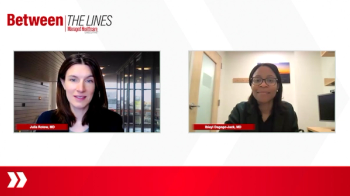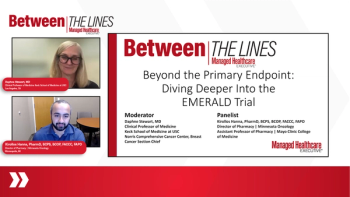
Payer Strategies to Reduce Delay to TRD Therapy
Dr Martin Rosenzweig discusses the importance of data collection to improve patient care in TRD as well as alternative payment models.
Episodes in this series

Steven Levine, MD: How might a payer flag a patient who’s receiving a medication like intranasal esketamine [Spravato] that requires high touch to support access and reduce delay to therapy? What are some strategies that can be employed there?
Martin Rosenzweig, MD: One thing that we have a lot of is data. We also have data that fits across episode and provider, or place of service. We have mechanisms by which we can track a member course. It’s claims-based, but it gives us that transactional, longitudinal view that many providers don’t have. Second, we have a system where we can put flags in place, develop an algorithm that would identify if you’ve had this amount of drugs in this setting and so on, and it would actually bubble up that patient for identification for one of our case management programs. These things exist right now in terms of determining the high-severity or high-need members and how we target them for outreach from our case management services.
To reiterate regarding what Sam was saying about the value of measurement-based care, we have that encounter-based or claims view. We’re driven as an organization to get some of that granular measurement at the clinical level because it also helps us understand which providers are skilled at treating which conditions, and what severity of conditions. If you’re running a practice that focuses on treatment-resistant depression, if we had their profile, we’d know that you’re getting these really sick patients and you’re able to move them along. It may take you a little longer and use more service, but it helps us understand why vs an inefficient provider who holds on to patients forever.
I want to underscore that the part that makes the system work more efficiently is data. It’s the granular data that can help us understand what providers are struggling with. I’m still in active practice and treating a lot of treatment-resistant depression is very time-consuming. These aren’t easy patients. They’re much more complex than an uncomplicated first episode of depression. We want to be able to support that and understand what alternative payment models we could develop where they would understand and support how these patients get taken care of.
Steven Levine, MD: Can you say a little about those potential alternative payment models and how that maybe leads to more of an alignment between the support required among patients, providers, and payers
Martin Rosenzweig, MD: The piece around alternative payment models is that if we understand the population and have some measures, there’s a way for us to pay for an episode of care rather than them worrying, “Am I going to get a black mark because I’m taking longer?” It probably helps from a practice management point of view to know that if I get this patient, my job is to get them from point A to point B, and I’m going be given the resource. I don’t have to keep going back and asking for it.
It’s a win-win all around. For the provider, it’s an easier experience. For the patient, they don’t have to worry about some of the barriers we talked about. From our point of view, we’re meeting the Quadruple Aim of the right care, right place, right time, and right costs. That’s the real value behind seeing if there’s a way that we could develop a methodology to bundle and take care of an episode, particularly with this population that can be very challenging to treat.
Transcripts edited for clarity.
Newsletter
Get the latest industry news, event updates, and more from Managed healthcare Executive.



















































